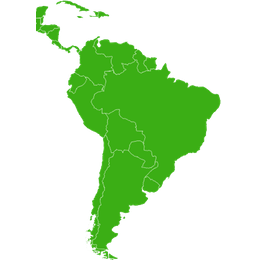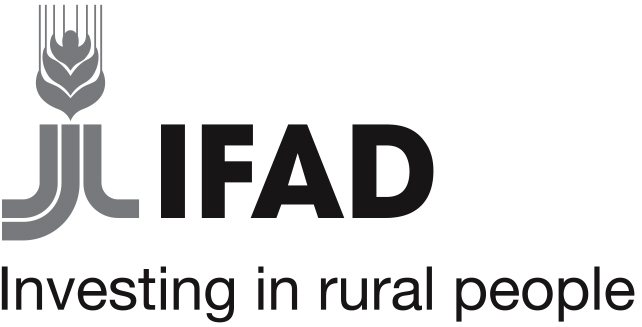Certificate scheme provides access to finance in Paraguay
"Smallholders, family farmers, women, workers and other rural groups were able to obtain credit."
BACKGROUND
Smallholders, producers, women and other rural groups in Paraguay were affected by declining productivity in the cotton industry. An innovative certificate scheme provided them with collateral for loans at better-than-market rates.
WHAT’S INVOLVED
Capacity-building for producers' organizations
Existing farmers organizations were lacking in technical and managerial knowledge, and couldn't take advantage of existing funds or business opportunities. Training and assistance helped raise their social capital.
Linking rural groups with the financial system
Through the certificate system, smallholders, family farmers, women, workers and other rural groups were able to obtain credit from financial institutions at a lower cost than market rates.
EXPLORE THIS SOLUTION
Explore this solution
The project can offer
- A proven method to support vulnerable rural groups against financial hardship by providing a form of collateral
Show Full Solution
Summary
When the productivity of traditional cotton production methods began to decline, small-scale producers and farmers, indigenous people, rural women and workers in Paraguay often suffered. They lacked the financial or technical capacity to adopt new technologies and diversify production activities. An innovative mechanism, the Certificates of Savings Deposit (CDA – Certificados de Depósitos de Ahorro), was developed. These certificates could be used as security by rural organizations (ROs) in Paraguay when applying for loans, relieving the need to find tangible collateral.
Challenge
A major constraint facing efforts to help the rural poor in Paraguay is the absence or weakness of mechanisms for inclusion and access to financial services, particularly in rural areas. To help alleviate this, there was a need to promote access to a variety of financial institutions; avoid market distortions; and facilitate access to credit to remove barriers and restrictions, such as lack of guarantees available to poor family farmers.
Solution
Most of the beneficiaries in the target areas were members of cooperatives, settlement groups and neighbourhood committees. However, these organizations themselves were generally extremely weak and lacked the capacity to identify business opportunities and manage existing funds available to them. The lack of social capital among the rural poor was reflected in the low levels of institutional capacity and management abilities, and the lack of knowledge in how to manage economic and financial resources put at their disposal.
Capacity-building of these organizations was the first step in the process. The next was to link farmers’ organizations to the formal credit system for them to obtain loans to finance their working capital needs. A key constraint at this point was the absence of collateral. The project overcame this by developing an innovative system to provide smallholders with access to commercial credits through Certificates of Saving Deposits (CDA by the Spanish acronym). The CDA were used by the farmers’ organizations as collateral to access wholesale credit at convenient interest rates, which was passed on to their members as individual loans. This helped reduce the cost of smallholder borrowing up to 50 per cent below the standard interest rates on the financial market.
Further innovative mechanisms were adopted, such as the administration of funds by organizations, the formation of networks to improve commercialization, and deposit mechanism (CDA) to capitalize resources and improve access to credit. Additionally, the promotion and build-up of the rural poor’s social capital enabled their organizations to access financial and technical resources.
Results
The use of CDA was highly effective. Where it was adopted, it contributed to improving the income for 55 per cent of families assisted. In terms of poverty reduction, this means that 4,450 families out of 6,192 were lifted out of poverty. Use of adequate production technologies, cost reductions in the acquisition of inputs and better capacity to negotiate with the retail market, all of which translated into increased income, were directly associated with access to commercial credit on affordable terms that was made possible through the use of CDA.
The CDA had an impact on the accumulation of financial assets and the availability of institutional credit and financial services. A total of 227 farmers’ organizations were able to access credit, as they had guarantee funds attached to their business plans. Technical assistance and additional training was provided to consolidate the loans provided to these organizations.
Despite considerable success in achieving the original objectives, the application of CDAs encountered some limitations:
- a low level of leverage with some participating financial institutions (PFIs) that only extended credit at 1:1 ratio with the CDA amount
- a high operating margin
- the limitation of CDA to credits for working capital, and;
- limited access to other financial services.
An independent study published in 2017 confirmed the effectiveness and sustainability of the mechanism. The study found some three years after project completion, some 47 per cent of the participating organisations continued using the funds to provide loans to their members, while 33 per cent had consumed the funds for productive investments and inputs. The remaining 20 per cent had foregone the CDA as a result of loan defaults. It is estimated that this remarkable result would have been even better had some follow-up been provided by government.
Lessons learned and potential for replication
Sustainability and full consolidation of CDA-related processes requires an adequate timeframe, as does the building of farmers’ organizations. About half of the farmers’ organizations required technical assistance and training beyond the six-year life of implementation to strengthen their performance and consolidate efforts aimed at promoting effective use of CDA funds.
Next steps
Considering the large unsatisfied demand for credit in rural areas, there is considerable scope for scaling up of the CDA process. There are also opportunities for deepening the mechanisms and experiences of the CDA for access to credit and for the development of financial services for the rural poor, including indigenous peoples. Two successive governments in Paraguay expressed interest in applying the project's mechanisms in the context of public policy, as well as to scale them up. The Ministry of Agriculture and Livestock has shown strong interest in adopting some of the successful innovative approaches, especially CDA.
Solution Document Downloads
Last update: 09/08/2018



